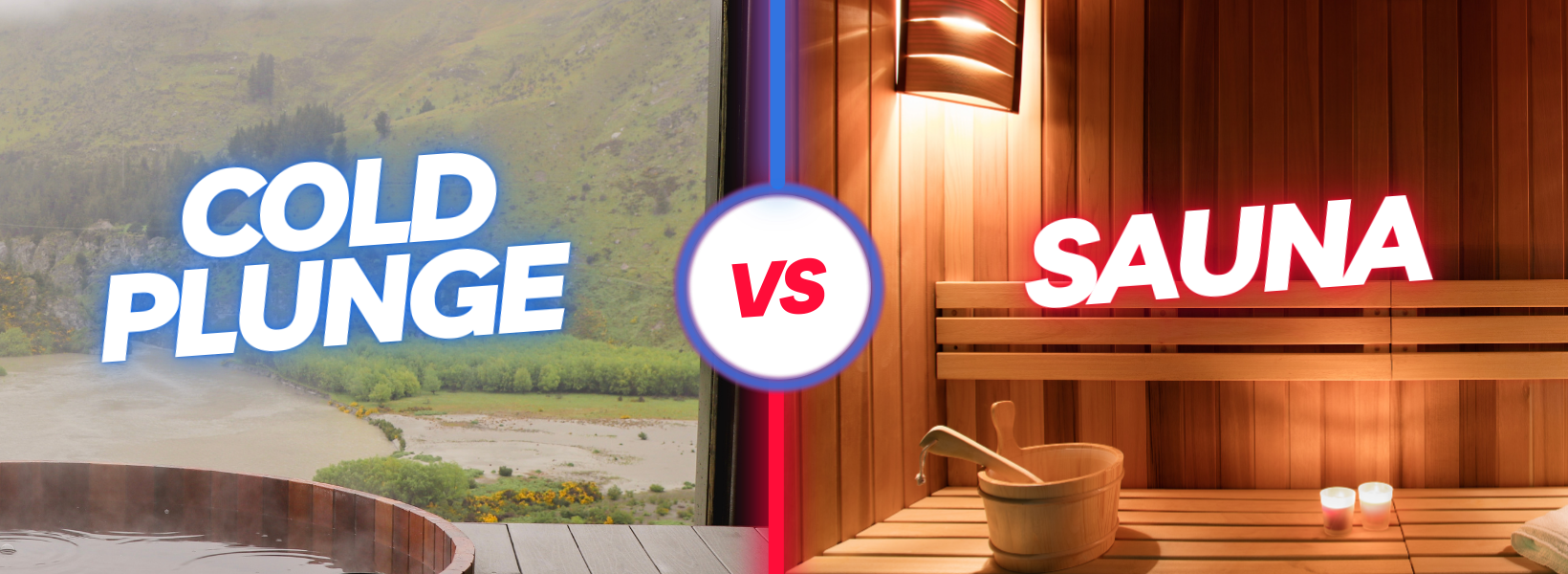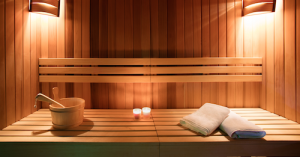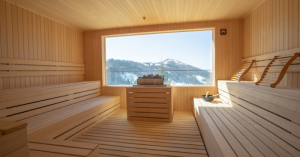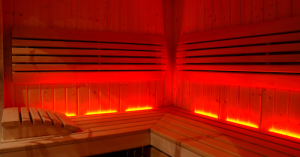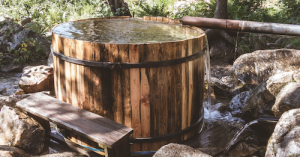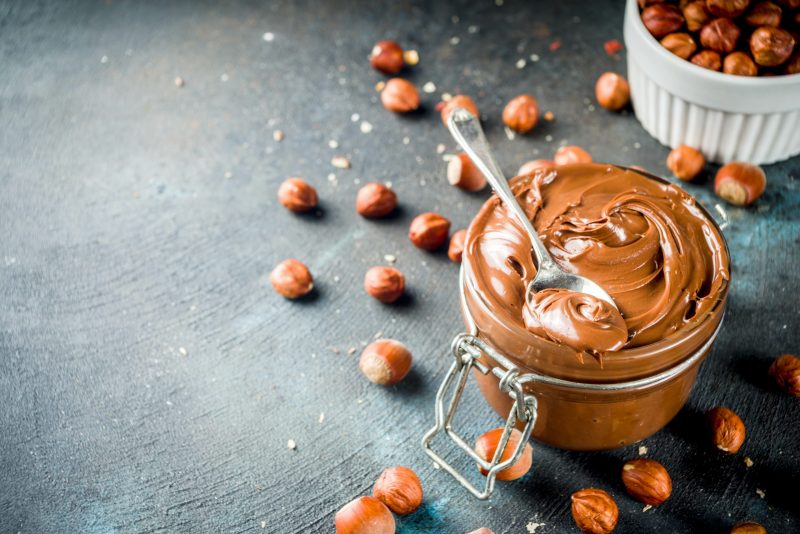Hot vs. Cold: Are Saunas or Cold Plunges Better for Your Energy, Heart, and Brain?
Saunas and cold plunges have gained popularity as wellness practices that not only relax the body but also boost overall health. Both of these temperature-based therapies offer distinct benefits and interact with the body in unique ways. Let’s explore how they positively influence our energy, heart health, mental clarity, and even help with long-term conditions like Alzheimer’s.
Saunas: Warm Em brace for the Body and Heart
brace for the Body and Heart
Saunas are known for their warmth, which brings profound relaxation to both body and mind. Studies show that regular sauna sessions can promote cardiovascular health. The heat causes the blood vessels to dilate, improving blood circulation and reducing blood pressure. This improved circulation supports heart health and has been linked to reduced risks of cardiovascular diseases. A 2015 study conducted in Finland found that frequent sauna bathing was associated with a decreased risk of sudden cardiac death, coronary heart disease, and all-cause mortality. Saunas essentially give your heart a gentle workout, while allowing your muscles to relax in a calm environment.
For those looking for an energy boost, saunas can be a natural solution. As the body heats up, it releases endorphins, the feel-good chemicals in the brain. These endorphins not only relieve stress but also help elevate mood and energy levels long after leaving the sauna. In addition, spending time in the heat helps the body regulate cortisol levels, supporting better energy balance throughout the day. By allowing your body to destress and reduce cortisol, saunas also promote improved sleep quality, which is crucial for sustained energy.
Sauna bathing is also being studied for its potential neuroprotective effects, particularly in reducing the risk of Alzheimer’s disease. A longitudinal study from the University of Eastern Finland showed that men who used a sauna four to seven times per week were significantly less likely to develop dementia or Alzheimer’s compared to those who used saunas only once a week. The improved circulation, the reduction in inflammation, and the relaxation benefits all contribute to better brain health and resilience.
Types of Saunas: Traditional vs. Infrared
Saunas come in different forms, each offering unique benefits. The two most common types are traditional saunas and infrared saunas.
Traditional Saunas
Traditional saunas use either wood, electricity, or gas to heat the air, which then warms the body. Temperatures typically range from 150°F to 195°F (65°C to 90°C) with relatively low humidity. Traditional saunas heat the body indirectly by warming the surrounding air, which can be deeply relaxing and promote sweating. Studies have shown that traditional saunas can help improve cardiovascular health, reduce stress, and support muscle recovery. The 2015 Finnish study mentioned earlier primarily focused on traditional saunas and their impact on heart health and longevity.
Infrared Saunas
Infrared saunas, on the other hand, use infrared light to directly heat the body without significantly warming the surrounding air. The temperatures in infrared saunas are generally lower, ranging from 120°F to 140°F (50°C to 60°C). Because of this, many people find infrared saunas more comfortable and easier to tolerate for longer periods. Infrared saunas penetrate deeper into the skin, which may enhance detoxification and improve circulation. A study published in the Journal of Complementary Therapies in Medicine found that infrared sauna use helped reduce blood pressure, improved arterial stiffness, and promoted overall cardiovascular health. Additionally, infrared saunas have been associated with pain relief and reduced inflammation, making them an excellent choice for individuals with chronic pain or arthritis.
Both types of saunas offer significant health benefits, but the choice often comes down to personal preference and specific health goals. Traditional saunas provide a more intense heat experience, while infrared saunas offer a gentler heat that penetrates deeper into tissues.
Cold Plunges: Icy Invigoration for the Mind and Body
Cold plunges, or cold water immersion, may appear intense at first glance, but their benefits are powerful. When the body is exposed to cold temperatures, it triggers an adaptation response that enhances circulation and increases metabolic rate. This boost in circulation strengthens the cardiovascular system by prompting the heart to pump more efficiently and regulating blood flow throughout the body. Studies indicate that cold plunges can improve blood vessel elasticity, which directly benefits heart health over time.
Energy-wise, cold plunges are a major wake-up call for the body. The sudden drop in temperature activates the sympathetic nervous system, resulting in a surge of adrenaline, increased heart rate, and a boost in energy. Many athletes and wellness enthusiasts swear by cold plunges as a natural way to boost alertness and reduce fatigue. The invigorating effect can also translate to an improved mood—cold water immersion triggers the release of neurotransmitters like norepinephrine and dopamine, leading to feelings of euphoria and improved mental well-being.
The benefits of cold plunges extend to the brain as well. Regular exposure to cold water has been shown to reduce inflammation, which may help support brain health and prevent neurodegenerative diseases like Alzheimer’s. Cold immersion also boosts the production of certain proteins, such as brain-derived neurotrophic factor (BDNF), which supports brain plasticity, learning, and memory. These effects make cold plunges a compelling practice for maintaining cognitive function as we age.
Saunas vs. Cold Plunges: Complementary Benefits
Both saunas and cold plunges can provide impressive health benefits, but they work in different—yet complementary—ways. Saunas induce a state of relaxation, promoting cardiovascular health and reducing stress, while cold plunges stimulate the body, promoting energy and enhancing mental clarity. When used together, these practices can have a powerful synergistic effect on the body. The transition from hot to cold, often called contrast therapy, encourages the body to adapt to temperature changes, which improves circulation, boosts immune function, and reduces muscle soreness.
For heart health, both practices show substantial benefits—saunas gently promote circulation by dilating blood vessels, while cold plunges increase vascular tone by constricting and relaxing blood vessels. This balance of expansion and contraction is great for cardiovascular strength and endurance.
In terms of energy and mental clarity, saunas help by reducing cortisol and allowing the body to enter a deeply relaxed state, promoting better sleep and sustainable energy. Cold plunges, on the other hand, deliver an immediate jolt of energy and heightened focus by releasing norepinephrine and adrenaline, making them perfect for those moments when you need an instant boost.
Conclusion: A Balanced Approach to Health
Both saunas and cold plunges have unique and powerful health benefits that can positively impact energy, heart health, and even protect the brain from cognitive decline. By embracing these practices, either individually or in combination, you can harness the power of temperature to support your wellness journey. Whether it’s the comforting warmth of a sauna or the invigorating chill of a cold plunge, these therapies offer a natural way to enhance your vitality, boost mental clarity, and improve long-term health outcomes.
How to Access Saunas and Cold Plunges
Many gyms now offer traditional or infrared saunas that can be used as part of a gym membership. This is a convenient way to access the benefits of sauna bathing without the need for a major investment. For those who prefer to have their own sauna, there are makeshift saunas available for purchase, with prices ranging from $1,000 to $3,000.
When it comes to cold plunges, you have several options. You can add ice to a cold bath at home for an easy and cost-effective solution. Alternatively, there are dedicated cold plunge systems that you can purchase, ranging in price depending on the features and setup. If you are a DIY enthusiast, there are also ways to build your own setups. Here are a couple of helpful resources:
These resources can help you set up your own wellness space at home and take advantage of the health benefits of saunas and cold plunges.
References
Biro, S., Masuda, A., Kihara, T., & Tei, C. (2003). Clinical implications of thermal therapy in lifestyle-related diseases. Journal of Cardiology, 42(1), 1-5.
Shevchuk, N. A. (2008). Adapted Cold Shower as a Potential Treatment for Depression. Medical Hypotheses, 70(5), 995-1001.
Shirey, T. M., & Hayes, A. (2017). Infrared Sauna Use in Patients With Cardiovascular Disease: A Summary of Current Evidence. Journal of Complementary Therapies in Medicine, 31, 76-82.
Huttunen, P., Kokko, L., & Ylijukuri, V. (2004). Winter swimming improves general well-being. International Journal of Circumpolar Health, 63(2), 140-144.

